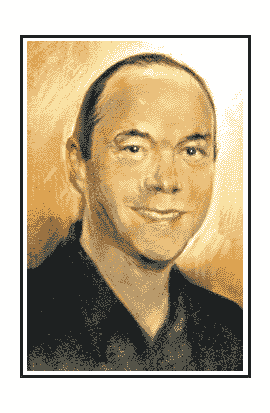INTERVIEW
Swing, Swing, Swing
Alan Farley Of HARD Right Edge
by Jayanthi Gopalakrishnan
What are the big differences between swing trading and momentum trading? Alan Farley can tell you. Farley is a private trader and the publisher of HARD Right Edge (www.HardRightEdge.com), a comprehensive online resource for trader education, technical analysis, and short-term trading techniques. He is the author of the McGraw-Hill bestseller The Master Swing Trader and is a popular columnist for The Street.com. Farley has been on the market scene for more than a decade as a private investor, advisor, and author. He speaks and lectures on swing trading, including original strategies and tactics illustrated throughout HARD Right Edge.Farley has also been featured in Barron's, SmartMoney, Active Trader, and Online Investor, among other publications. He consults regularly with industry leaders on issues facing today's traders, and is a strong voice for the Internet revolution changing the face of our modern markets. STOCKS & COMMODITIES Editor Jayanthi Gopalakrishnan spoke with Farley on November 21, 2002, via telephone.

Swing traders live for the wiggle. They live for the waves, the pullbacks, the turnarounds and reversals.
Alan, when did you first get involved in the markets?
It was in the late 1980s, after the 1987 crash. I started out using mostly the Value Line Investment Survey and a very expensive brokerage account, which had commissions of more than $100. I looked at Value Line's one-year and five-year data, and tried to pick plays for three to six months. I wasn't too good at it in the beginning.
How long did you do that?
I did it for four or five years. I think my real christening came when CompuServe's investing board started to pick up about 1992 or 1993. There was a section in there called the Investors' Forum, with members like Jimmy Rogers and John Bollinger. There were full-time bond traders, full-time Treasury traders, and currency traders, and there was an incredible wealth of information. I joined that organization's staff in 1993 or 1994 as a volunteer. One of my duties was to read everything that was posted to make sure it conformed to CompuServe's comment policy. I must have read more than a million posts. So it was a tremendous way to build up an education at a time before there was an Internet the way we know it today. This was even before AOL!
I also went down to the bookstore every Saturday morning and read John Murphy's books, and read just about everything I could get my hands on. I did that for a long time, and that's when I started to build up my love-hate relationship with technical analysis.
So your trading methods are pretty much self-taught.
Completely self-taught. I've always been a private trader. I've never run a hedge fund; I've never managed anybody's money except my own. I love what I'm doing, and that's not likely to change.
Have you been swing trading all the time, or is it something you discovered?
I was swing trading in about 1993. I did position trading early on. As commissions dropped and I opened my first E*Trade account, I started swing trading and tried to hold my positions for two, three, four days. When the daytrading boom hit, I switched over to daytrading. I did that exclusively for a few years. For the last two and a half years I've been back to swing trading again and holding positions overnight, because there's so much money to be made in the overnight markets.
...Continued in the February 2003 issue of Technical Analysis of STOCKS & COMMODITIES
Excerpted from an article originally published in the February 2003 issue of Technical Analysis of STOCKS & COMMODITIES magazine. All rights reserved. © Copyright 2003, Technical Analysis, Inc.